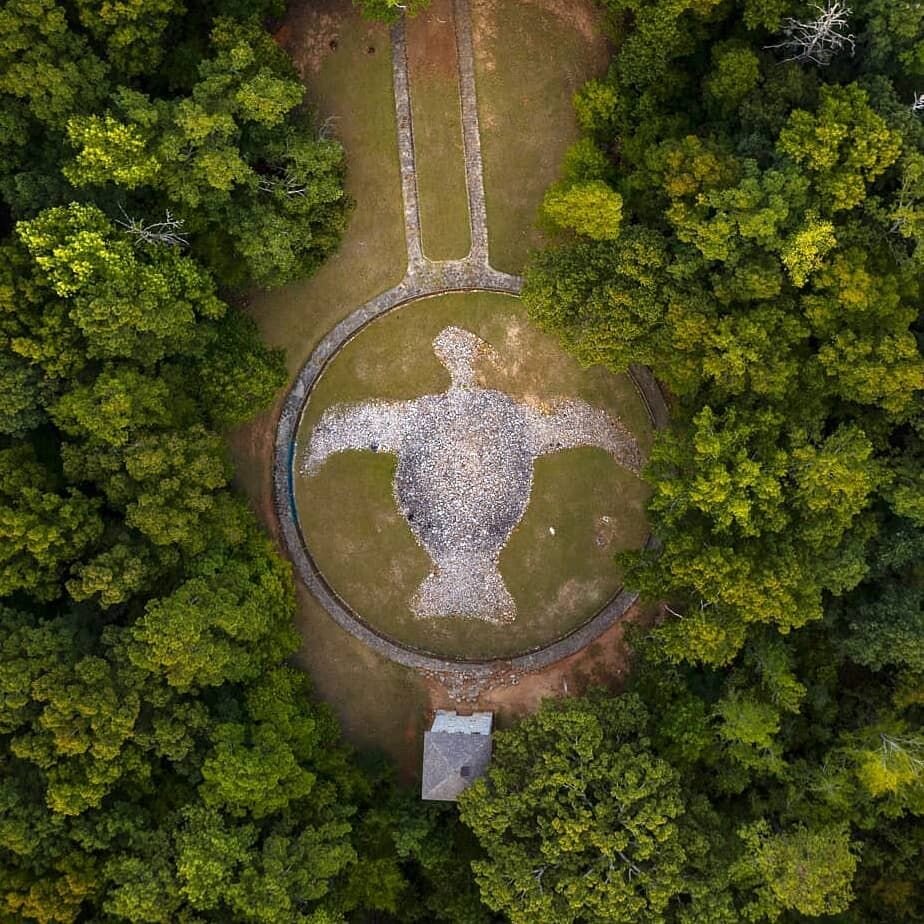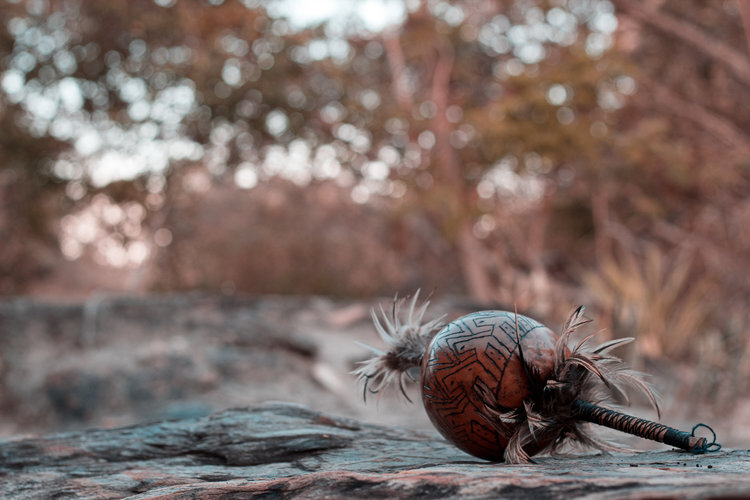“Tred softly here, white man, for long ere you came, strange races lived, fought, and loved.”
This quote, found on the historical marker at the entrance to Rock Eagle Effigy Mound, has always intrigued me. I have never been able to attribute it to any author, but I do know that the Georgia Society of Colonial Dames sponsored the historical marker in 1940 and it was placed near the entrance to the mound off US Highway 441 and today’s 4-H Center because it was a significant site. To me, the words are both a warning and a reminder.
With a wingspread of 120 feet and height of 102 feet, tail to beak, how did this ancient quartz rock mound, thought to be thousands of years old, survive the farmer’s plow, road builders and developers to delight today’s travelers and history buffs?
The oral history of the Creek Indians, who inhabited this land for centuries, reported that this mound and another were here when their people migrated to the region. Their history states that ancestors sensed the religious importance of the mound and avoided the gray-white bird-like effigy lying in the shade of their hunting forests. They said their ancestors found it as it was, and had decided to leave it as it was.
The mound’s luck continued when Irby Hudson Scott acquired the land after the 1802 treaty with the Creek Indians that led to the creation of Putnam County. The Scott family never farmed the area around the rock eagle, which again protected it through years until the family sold the land to the federal government in 1938.
Good fortune continued for this rare monument because the government turned the land into a park and Roosevelt’s CCC workers began restoring and protecting the rock effigy with a fence and imposing granite-viewing tower.
Since that time, the mysterious, milky quartz effigy has been put into the hands of the University of Georgia and its archaeology department for study, and has been viewed by thousands of folks passing through Putnam County.
However, the second rock effigy, Rock Hawk, located near the Oconee River, was not as lucky. It was not protected until the Georgia Power Company purchased the land to create a reservoir that became Lake Oconee. In 1990, it too was turned over to the University. Rescued from the forest growth and further damage, it is now protected, though not restored, and ready for viewing. Both archeological sites are now on the National Register of Historic Places.
How old are the mounds? Although exact dating cannot be done, some authorities think they could be over 6,000 years old. That would mean that when the Pyramids were built in 2,500 BC, our mounds would have already been around for 1,500 years.
What prompted the builders to create such labor-intensive effigies is still a mystery. They obviously held ceremonial significance, but other than pottery and bones little is known about these Archaic Period inhabitants, “ who lived, fought and loved “, long before the rise of the later Mississippian, Creek, and Cherokee cultures.
The Europeans were the late arrivals to this land and, unfortunately, we tend to view the history of our area rather narrowly from 1807 until today, sometimes forgetting the contributions and rich history of the indigenous people who lived here, “long ere we came”.
However, we are often reminded of them through the lyrical names of rivers like Oconee, Ogeechee, and Ocmulgee and sometimes, if we are lucky, we even find evidence of their lives here when we find an arrowhead or pottery shard. It is then that we realize we should indeed, “tred softly,” for we are on borrowed land.
Contributed by:
Lyn Gregory Romine
Board Member & Docent of Old School History Museum
Chair of Eatonton Historic Preservation Commission
AUGUST ADVENTURE - ARCHAEOLOGY DAY
The Ocmulgee Archaeological Society (OAS) in partnership with the Eatonton Old School History Museum will hold its Archaeology Day on Saturday, August 7th, 2021, from 12:00 pm to 4:00 pm. This event is FREE and open to the public. Read More >




